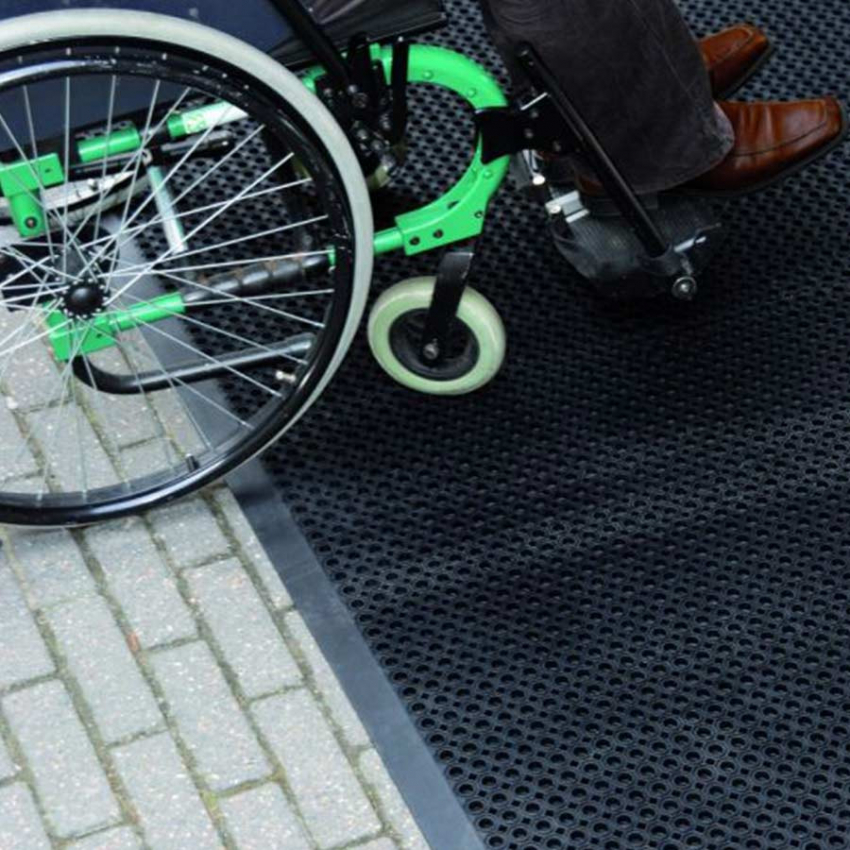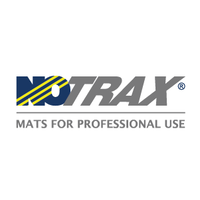










The outdoor mat is a grating with small octagonal drainage dimples and a smooth surface, conforming to the European standard for public entrances and facilitating access for small wheels (carts, wheelchairs, suitcases, etc.) Molded edges on all four sides facilitate access and prevent falls. Made from hard-wearing rubber, this non-slip mat is ideal for the heaviest traffic. It is easy to clean and can be used in extreme weather conditions. Excellent grip and adaptability to all surfaces.Spikes on the underside of the tread elevate it to drain liquids, leaving a clean, dry surface.
Available in standard or custom sizes.
In compliance with EU standards for public entrances.
Available on request in nitrile, oil-resistant or fire-resistant versions.
RECOMMENDED APPLICATIONS :
Freestanding outdoor installation / High-traffic areas.
| 599 OCTO FLEX BEVELLED |
Data sheet
| Format | Mat |
| Surface | Openwork |
| Design | Octagonal cells |
| Location | Exterior Outdoor under cover |
| Intensity of passage | Intense |
| Properties | Draining Non-slip Scraping |
| Composition | |
| Thickness | 12 mm |
| Weight | |
| Borders | |
| Sole | |
| Maintenance / Cleaning |
Anti-dirt-repellent mats are the first line of defense in keeping dirt and debris out of buildings. They improve air quality, reduce noise resonance, extend floor life and cut maintenance costs.
Dirt-repellent mats also facilitate access for people with reduced mobility, while ensuring the safety of all users (avoiding falls, slips, etc.). But they also contribute to the cleanliness and hygiene of your premises, while enhancing your image, since the entrance is the first impression your customers will have of your establishment.
To cut a long story short, a dirt-repellent mat must meet 3 main criteria:
When choosing an antisoiling mat, there are a few criteria to consider:
Your environment:
Type of traffic :
There are 3 ranges of dirt-repellent mats:
Professional dirt-repellent mats are used in all establishments with one or more entrances, such as :
We offer a wide choice of dirt-repellent mats:
Grating is a square slab of metal, polyester, rubber or PVC, made up of several parallel slats. The slats come in a variety of sizes, species and colors, and are grooved to prevent water from stagnating and the floor from becoming slippery.
Polyester gratings: Food industry - Paper and cellulose industry - Pharmaceutical industry - Plastics industry - Fiber and textile industry - Automotive and aircraft construction - Offshore installation - Sewage treatment plant - Navy and shipbuilding - Transport - Pickling and galvanizing plant.
Rubber gratings: Can be used in a wide range of applications: building entrances, walkways, stairs, access paths, production lines, ski resorts, etc.
Hygienic gratings: swimming pools - changing rooms - saunas - hotels - kitchens - steam rooms, etc.
Metal gratings: Thermal, hydroelectric, nuclear and solar power plants - Chemical and oil industries - Automotive and steel industries - Shipbuilding - Cement works - Metal processing and construction - Railways and transport
Test one outdoor anti-slip mat